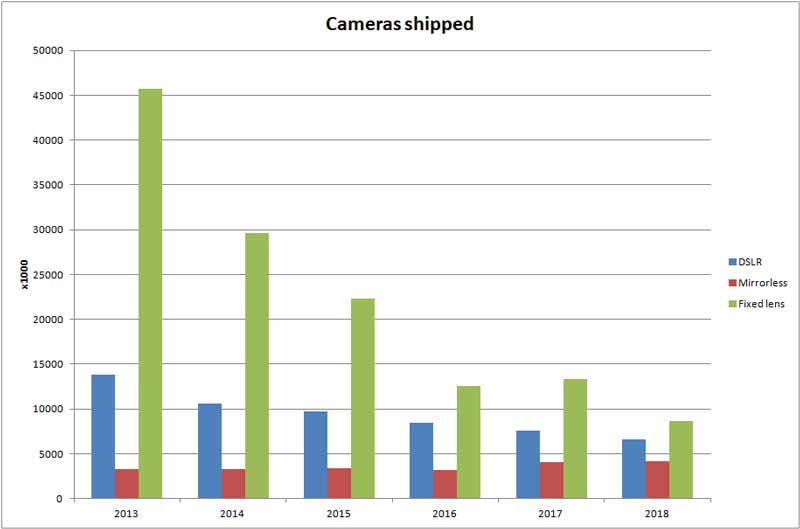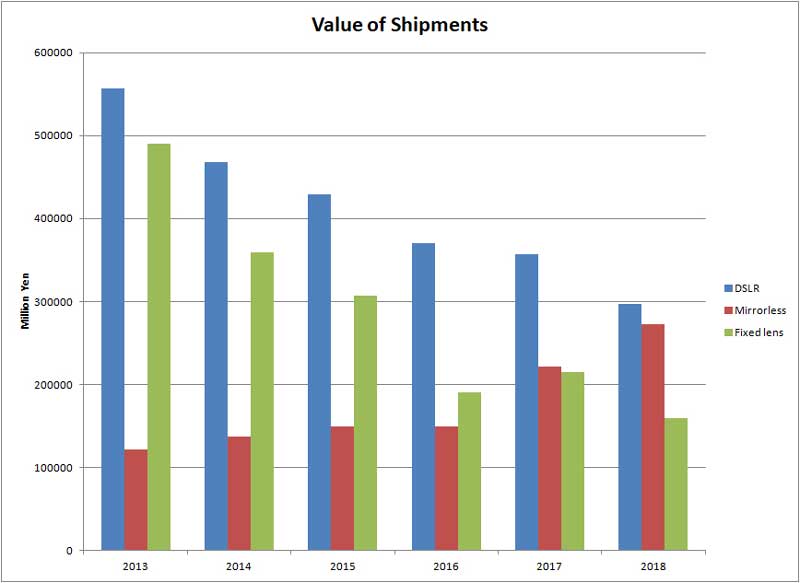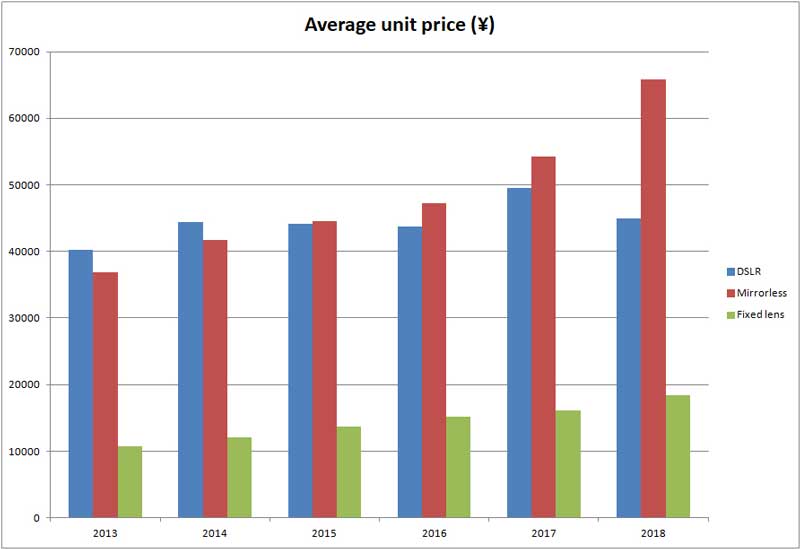The following graphs were prepared by our esteemed colleague, Margaret Brown, from data supplied by the Japanese camera manufacturers’ association, CIPA. They mark the decline of the ‘snapshooter’ camera and its replacement by the smartphone, in tandem with the more gradual (but possibly no less inevitable) replacement of the hybrid-technology DSLR by the fully-digital mirrorless interchangeable camera.

Digital compacts were on the wane prior to 2013 as better cameras in smartphones rendered them less relevant, but the dramatic drop from 2013 to 2014 – when shipments fell by around 30 percent in one year – pretty well spelt the end of cameras as a mass market consumer electronics category. (‘Clear ’em off the shelves and whack some dashcams in their place.’) The drop from 2015 to 2016 was even more extreme, but from an already decimated base.
While DSLRs were also on a downward trajectory, the new mirrorless interchangeable category – largely M43 models from Olympus and Panasonic, and then the Fujifilm X series – did little more than tread water until 2017.

But in value terms more than sheer units, the mirrorless category became increasingly important to the camera manufacturers, even though Canon and Nikon were late and, until recently, seemingly half-pregnant participants in the only segment of the market delivering any kind of growth. In 2017, mirrorless cameras became more valuable to the camera manufacturers than compact models, with approximately zero support from Canikon.

While from the above graphs the camera industry has clearly been in decline, the good news for specialist camera retailers is that there is good growth in the segment delivering the highest average unit prices. The seemingly endless and boring re-iterations of entry-level DSLR kits from, once again, Canon and Nikon, has proven to be an ‘unleaderly’ strategy, which has probably held the industry back for a year or two.
The other noteworthy aspect of the graph above is the steady rise in the average selling price of digital compacts. Smartphones just don’t cut it when you want a camera with a massive zoom range, or to take underwater, or offering the precise manual control and superb glass of a premium camera like the Ricoh GR or Sony RX series.
In a recent interview UK magazine, Amateur Photographer, risked being taken off the Canon media list (we know we have!) by asking Yoshiyuki Mizoguchi, Canon Image Communication Business Operations Group Executive, whether Canon regretted ‘coming relatively late to the mirrorless party’.
Conceding that mirrorless cameras now accounted for over 60 percent of the market in Japan, he responded, ‘As you may know, Canon has a history of not always being first in the market with new technology, but we are very good at catching up, going beyond and becoming the leader.’ – But past achievements are not a good indicator of the future. Remember IBM PCs?
Whether Canon can establish leadership in mirrorless cameras remains to be seen, but with the new mirrorless technology shown by Canon, Nikon, Olympus and Panasonic in recent months, mirrorless technology now leads the camera industry. Kudos also to the specialist lens makers, especially Sigma, for providing premium optics at non-monopolistic prices. The Canikon duopoly has been smashed.
(In case you’re wondering, that little uptick in fixed lens camera shipments from 2016 to 2017 was probably due to the 2016 Kumamoto earthquake, which knocked out Sony’s sensor plant for many months, creating a discontinuity in the supply chain.)
– Keith Shipton





Be First to Comment